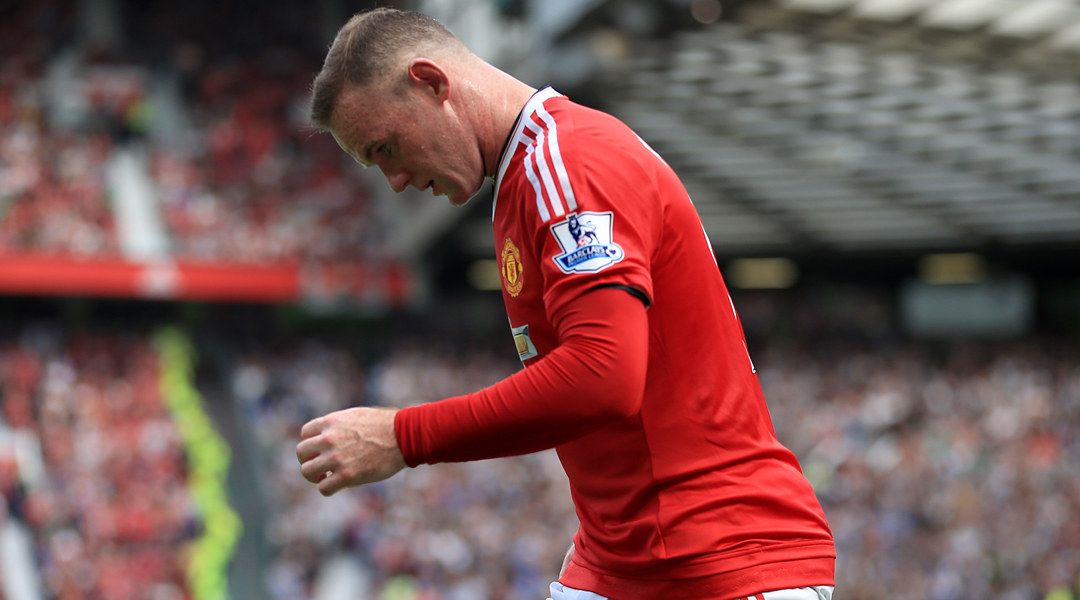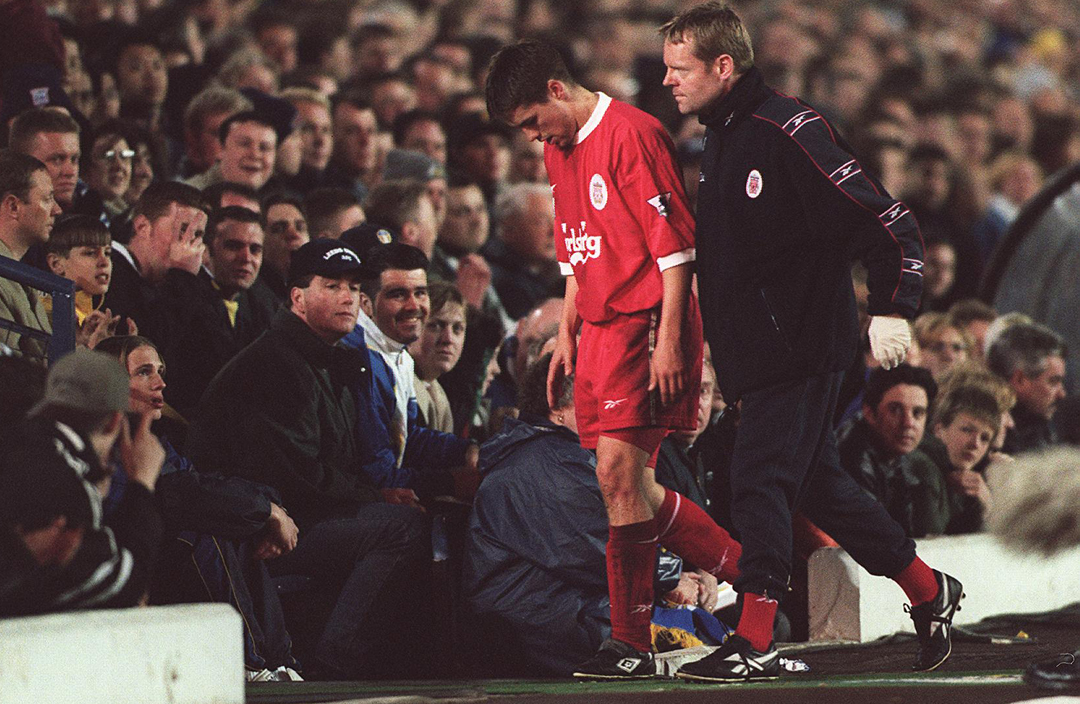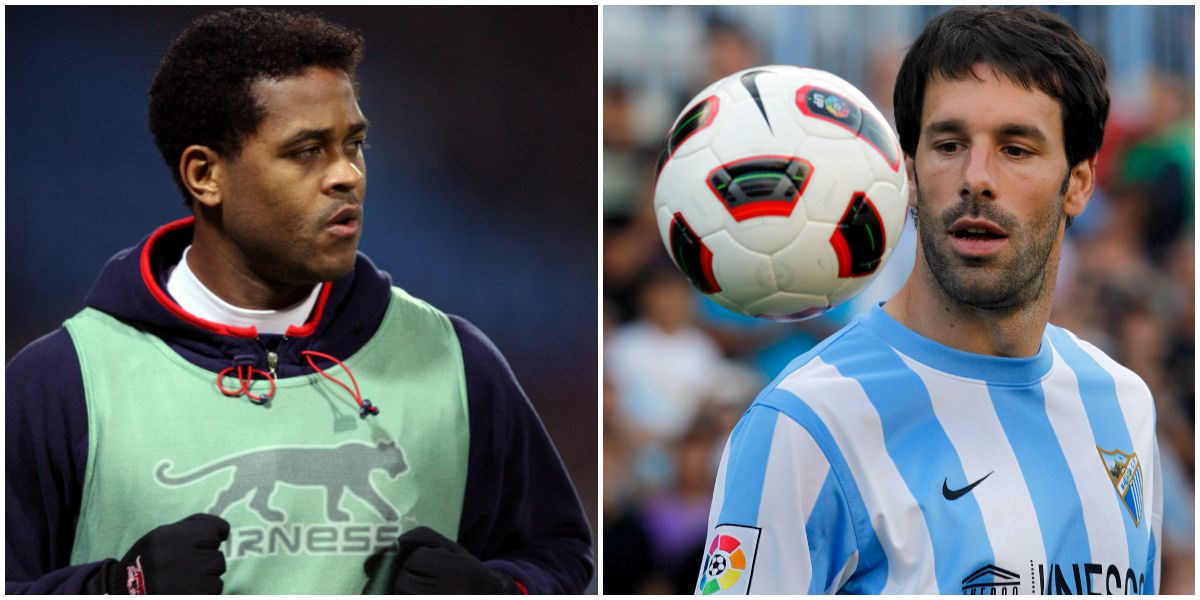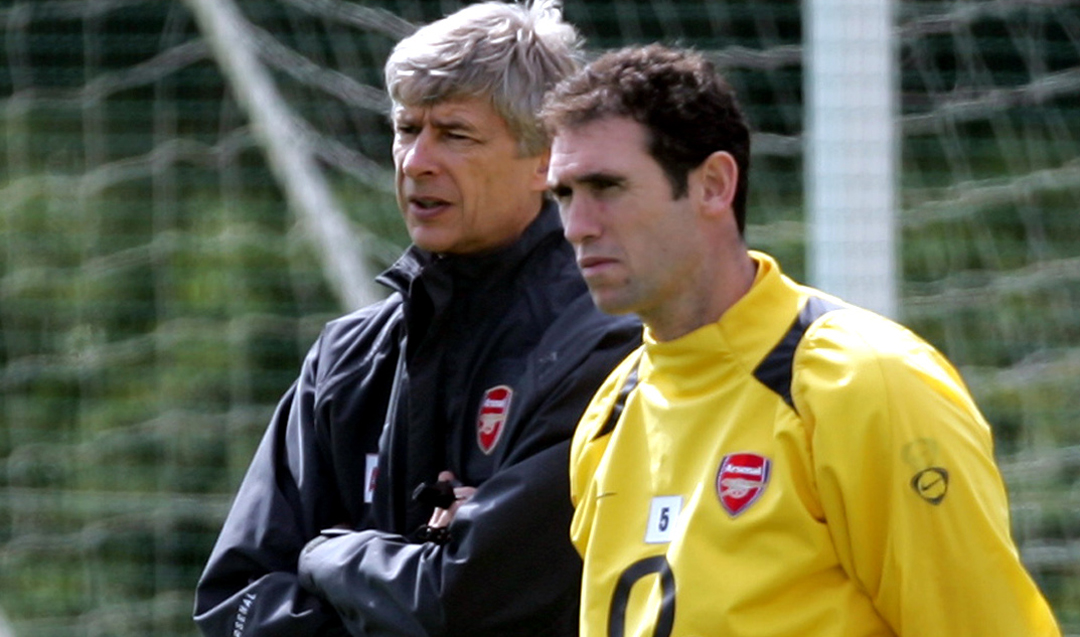The truth about longevity: why it's probably not the end for Rooney
Can more be done to stop stars limping away from their playing careers so prematurely? As England skipper Wayne Rooney comes under the microscope after a slow start to the season, Andrew Murray explores the cutting edge sports science behind today’s evergreen pros...

On March 19, 2013, Sky Sports News’ yellow ticker of doom fizzed into overdrive. Websites and newspapers soon followed suit, each one reminiscing over the defining moments of England’s most natural goalscorer since Gary Lineker. But as Michael Owen announced he would retire from professional football at the end of that season, aged just 33, it was difficult not to shake the feeling of what might have been.
A precocious teenage regular for Liverpool and England, when the breakout star of the 1998 World Cup joined Newcastle United in 2005 after a season at Real Madrid, the 26-year-old was – in theory – approaching his peak years. But, already hampered by persistent hamstring trouble, he was never truly able to replicate the blistering pace and devastating finishing that defined his early career. That debut campaign on Tyneside was Owen’s 10th as a professional. The PFA say the average career length is eight years.
So why does this happen? Does, according to one of Owen’s former coaches, “every player have a life cycle, whether they start playing regularly at 16 or 21”, or can the stabilising effects of elite sports science push the PFA’s average higher? Indeed, could modern medicine end the unfulfilled boy wonder?
That debut campaign on Tyneside was Owen’s 10th as a professional. The PFA say the average career length is eight years
Copers and no-hopers
“Playing 40 games a season is very demanding for a 17-year-old,” says Manchester United’s head of elite development Tony Strudwick, who worked with Owen for three seasons at Old Trafford. “I don’t think it’s a problem when players hit the ground running at such a young age. However, it’s very difficult to sustain in the long-term.”
And this isn’t a problem restricted to England. Real Madrid royalty Raul – once Los Blancos’ youngest player – noticeably slowed in his latter Santiago Bernabeu seasons, even if his goalscoring did not until his final campaign in the Spanish capital. Admittedly impressive in two seasons in Germany with Schalke, Raul is now in semi-retirement with American second-tier side New York Cosmos.
Raul and Owen are what Mo Gimpel, head of Southampton’s award-winning sports science department, calls “copers”. “These players can deal with their body’s problems,” he tells FourFourTwo, “but struggle to overcome persistent issues. They don’t have a career-ending injury, but their body can’t deal with the stress that comes with being a pro footballer.” Even as far back as the 2002 World Cup, Sven-Goran Eriksson hired physio Richard Smith to work personally with Owen, who was 22 years old.
The best features, fun and footballing quizzes, straight to your inbox every week.

English football, in itself, can also be a factor. “In the last 10 years, the number of sprints in the Premier League has doubled,” says Strudwick. “What kind of player you are and how you adapt is crucial. If you are a highly powered athlete, there is always an increased injury risk that is beyond the player’s control.”
As an athlete ages, swift lateral steps and sprints are often the first to dim. Nimble strikers running into channels can find life difficult. This is why triathletes or marathon runners can mature in their late thirties or early forties, the bulk of their movement being in one direction. The footballer has no such luck.
But problems with child stars aren’t always physical. The youngest player to score in a Champions League final in 1995 (at 18 years and 327 days), Patrick Kluivert was the golden boy for Ajax and Barça in the mid-to-late ’90s. Yet by his final season at Camp Nou in 2003 (his 10th as a professional), the strapping centre-forward’s body – not helped by a rumoured fondness for a night out – was already in terminal decline.
Spells at Newcastle, Valencia, PSV Eindhoven and Lille came to little and he retired in 2008, aged just 32. By contrast, his compatriot Ruud van Nistelrooy – born on the same day as Kluivert; July 1, 1976 – was still going strong at Real Madrid until 2010 and only ended his career in 2012, helping Malaga finish fourth in La Liga and qualify for the Champions League as he approached his 36th birthday.

Some of the best talent doesn’t make it that far. “Lifestyle and commitment both contribute,” says Southampton’s sports science guru, Gimpel. “They make the decision to be injury robust or not. So many fall away because they think they’re at the promised land. You have to remind them how many games they’ve played. If it’s nil, then they’ve achieved nothing, apart from signing a contract.”
Others, Gimpel believes, simply lose motivation. “For some released at 18-20, being faced with dropping down the leagues is such a psychological blow they think: ‘I can’t do this anymore. I’ve given it my best shot.’ If the carpet is pulled away, they drop out. Some England players have told me they can’t wait to give up football. When you see the work pros have to go through, I can understand it. Lots of people out there do a job they don’t like, but get well-paid, setting them up for life.”
Personal touch
Some England players have told me they can’t wait to give up football. When you see the work pros have to go through, I can understand it
Given the various pitfalls that exist, how can sports science help top talent in its formative years? The answer is an appreciation of what makes each player tick. “The days of ‘one-size-fits-all’ training sessions are over,” says Gimpel, who helped mould Gareth Bale, Alex Oxlade-Chamberlain and Theo Walcott’s early careers in 15 years on the south coast. “Modern science and coaching techniques help implement the right programmes for the players at the right time and maximise their potential. Each player is treated as an individual.”
“Theo was always an outstanding youth player; when he was 15, he played three age groups up and reached the 2005 FA Youth Cup Final,” recalls Gimpel. “At the beginning of his sole first-team season he came on as a substitute before gradually starting games. Arsenal followed the same model.”
Bale and Oxlade-Chamberlain’s routes were far different. “They were both late developers, who suddenly exploded as they fully developed,” explains Gimpel. “Oxlade-Chamberlain actually played below his age group, because he was so small and not particularly quick, which is ironic given how fast he is now. We wanted him to play with similar-sized players, which maximised his playing time. When physical maturity arrived the effect was incredible: he was a first-team regular for the youth team by the age of 16.”

From heart-rate monitors to GPS systems that measure distances covered and muscle power outputs, statistics from more than 250 matches and training sessions over a season are compiled to assess how much effort has been expended to protect burnout. But, as coaches increasingly blood teenagers from the bench, the danger of underplaying is becoming increasingly prevalent – and can be more damaging than overplaying according to Professor Magni Mohr, a senior researcher at Exeter University who has published several studies on the effects of football over time.
“The coach wants them on the first-team substitutes' bench on the Saturday afternoon,” he tells FourFourTwo, “which means they don’t train properly towards the end of the week, when work focuses on specific set-pieces and tactical drills. After two months without playing much football, they’re not match-fit, which puts them at a huge injury risk if they’re thrown into a full game.”
Respecting your elders
There are, of course, exceptions. Freaks of nature like Paolo Maldini, Ryan Giggs and Javier Zanetti, who became first-team regulars at an age when most of us are still mastering arithmetic but still going strong when mere mortals are reaching for the pipe and slippers. It's here that sports science’s influence, allied with a febrile desire to extend a career, comes into its own.
After two months without much football, they’re not match-fit, which puts them at a huge injury risk if they’re thrown into a full game
Much of that is down to the effect of Fernando Redondo’s dodgy knees. When the Argentine broke down in one of his first Milan training sessions in 2000, despite passing a rigorous medical ahead of his £11 million move, the Rossoneri were inspired to embrace science. Two years later, the world famous Milan Lab – the blueprint for many Premier League sports science departments – was born. Based around a chiropractic philosophy that could identify specific structural problems in players’ bodies, Maldini, Clarence Seedorf, Cafu and Filippo Inzaghi are among the players who credit it with extending their career.
Under the systematic approach of Arsene Wenger, Arsenal have long been using similar techniques. “There’s no doubt I played longer under Arsene – I went to a World Cup at 35,” Martin Keown tells FFT. “The biggest help for me was the chiropractor at the club, because I had problems with my back. After an hour with him, I felt I could run marathons. Wenger’s access to world-renowned professionals was incredible.
“We improved our diet, stretching and general awareness to football. Us over-thirties trained separately from the rest of the squad. After matches, we would either not train at all, or essentially warm down until the middle of the week. Then, as matches approached everything became shorter and sharper.”

But it’s at Manchester United that arguably English football’s most effective career-extending department resides, headed by fitness and conditioning chief Strudwick. Gary Neville, Paul Scholes and Rio Ferdinand all lasted into their mid-thirties, but Giggs is the Valedictorian, not hanging his boots up until 40.
“Ryan understood what his body was telling him and adapted his training accordingly,” says Strudwick. “He didn't go out drinking. Psychologically, it can be difficult for an elite athlete to keep going year on year.
"You become more cerebral when you get older. There’s been a greater emphasis on recovery strategies over the last five years, and the micro-management of players on a daily basis.” Giggs said towards the end that it could take a while to convalesce from evening games, and trained only lightly as he saw fit.
Strudwick is also keen to point out that, the son of a professional rugby league player, Giggs was at a genetic advantage. “His running economy was incredible – he used so little energy per stride. The more efficient you are over 20 years, the fewer injuries you’re going to pick up because his impact on the pitch is much less than other players.” There are parallels with tennis. Andy Roddick retired at 30, his body struggling to cope with his high-impact game, while 17-time major champion Roger Federer is still going strong at 34, reaching Wimbledon finals and gliding over the court with feline dexterity.
Rooney rule
There’s been a greater emphasis on recovery strategies over the last five years, and the micro-management of players on a daily basis
Does it help that Giggs, Maldini et al are one-club men? “This consistency throughout their careers builds routine, while travelling to work and other stresses are negated,” says Strudwick. “But I would add a season for Manchester United is the equivalent of a season-and-a-half for smaller Premier League teams because of the intensity and the greater number of games played.”
Indeed, only David Beckham has frequently moved clubs in his older years, while maintaining peak physical fitness at elite level. “What is interesting over the coming five to 10 years,” believes Southampton’s Gimpel, “is whether the advancements we’ve already made continue when players move clubs.”
In the same time frame, it will become more obvious how the increasingly individual approach to player development affects a professional’s average career length.

Crucial to this is improved analysis of the statistics sports science departments already produce. Embryonic studies into player archaeology – where season-by-season, position-specific attributes are evaluated over the course of a professional’s career – are proving useful. Premier League stars like Wayne Rooney or James Milner, both of whom made their first-team debuts at 16 and have a decade’s data to analyse, are especially useful.
“The advances in technology mean that information is available at the top level to a lot of clubs – the challenge is to interpret it effectively,” says Professor Mohr. “With the advances we’re making, in the future we’ll definitely see more examples of people playing into their forties, even at the highest level. When clubs sign a player in their mid-twenties, they want to know whether they’re getting someone who will have a long career or not.”
Perhaps Rooney and Milner, not Owen, hold the key to giving footballers the best years of their careers back. It's not over for the former yet.
A version of this feature originally appeared in the June 2013 issue of FourFourTwo. Subscribe!
Andrew Murray is a freelance journalist, who regularly contributes to both the FourFourTwo magazine and website. Formerly a senior staff writer at FFT and a fluent Spanish speaker, he has interviewed major names such as Virgil van Dijk, Mohamed Salah, Sergio Aguero and Xavi. He was also named PPA New Consumer Journalist of the Year 2015.

